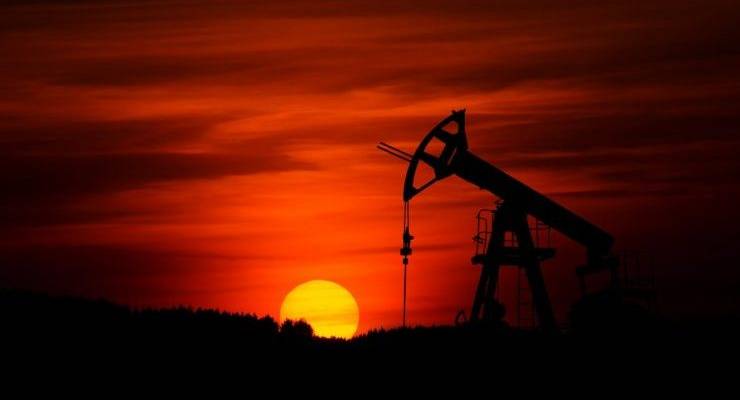
Oil prices have jumped and plummeted so quickly since the COVID-19 crisis began that analysts can hardly keep up.
In the past two weeks, prices have dropped into negative numbers — the lowest price in history — as storage locations filled up. There was a brief spike in prices on Tuesday after a bomb was detonated on an oil tanker in Syria, before tumbling again thanks to forced sales of future contracts in the US, then rising again yesterday as Asian stocks entered the market.
While no one knows what the future holds, Crikey spoke to three experts for their take on what life in the oil market will look like after COVID-19.
Oil will be a rich man’s game
Matt Mushalik, an oil analyst and adviser to the Australian Association for the Study of Peak Oil and Gas told Crikey the world is looking at a peak oil scenario as firms pull out of the market.
“Oil prices are too low for oil companies to survive, so we are going to see oil companies reduce their investments. That means if demand kicks up we might see some problems,” he said.
While the biggest players Russia and OPEC have agreed to cut back on their production, oil rigs have already started to close across the US and Canada, with others filing for bankruptcy. In Australia, Caltex has temporarily shut down one of four oil refineries.
“Of particular concern is the US Shell Corporation and TransCanada Corporation. How many of these companies will go broke before oil prices go up again?” said Mushalik.
Limited production following COVID-19, combined with a flattening of oil production since 2005, means limited supply. He predicts oil prices will go through the roof as demand increases. High oil prices can trigger or deepen a recession.
“The economy could not handle the price spike and could only survive a short time.”
Prices will be incredibly volatile
University of Technology Sydney professor of economics Warren Hogan told Crikey oil prices are bound to fluctuate as the world gets back on its feet.
“What we’ll be seeing is the effect of COVID-19 shutdowns in reverse … The easing in restrictions could produce a pretty quick — but not as sudden — ramp-up in demand. It will be more staged across months instead of weeks,” he said.
Hogan says there would first be demand for petrol for cars, followed by domestic flights then international ones. Refineries and rigs would slowly increase production in line with demand.
“There will be price volatilities in the wholesale market, but I doubt it will be sustained for multiple weeks or months because the reopening of industry will be a lot more predictable,” he said.
Whether these price jumps are passed on to the consumer remains to be seen.
This would change, of course, if there were a second wave of the pandemic. “This is an added risk that becomes more likely if we ease things back. A second wave would cause another sudden shutdown,” said Hogan.
The question for right now is whether oil firms can sustain low production until demand increases. More firms are likely to fold.
“The most expensive extraction ceases first, which would be oil sands and shale oil in the US, followed by the supply with the least amount of government support,” he said.
Most firms, however, would try to keep their heads above water and limit production until demand increased. “We can expect rigs to go reopen production when prices hit the $20-30 mark,” Hogan said.
A return to business as usual
David Byrne, an associate professor of economics at the University of Melbourne, told Crikey that there’s a huge economic incentive for firms to continue business as usual once the pandemic passes.
“In our generation, oil is still going to be a key driver in transport,” he said. “It’s still the cheapest way to transport things around until electric vehicles become cost-effective. The COVID-19 demand shock will not last indefinitely.”
As with Hogan, Byrne believes large firms will slow down production instead of closing completely: “They have every reason to continue operation, even building a massive debt because, after this, they’re going to be making big margins.”
The risk of limited oil supply comes not from production companies, but geopolitical tensions — though thanks to good relationships with Canada and the US, along with our own natural gas supply as leverage, Byrne doesn’t see this as a huge threat.
“The economic incentives in all these oil-producing companies are there to meet the market, and the market will be there,” he said.








Synthesis of fuel from re-energising captured CO2 will have to compete with the traditional fuel. Knowledge of the bottom sustainable price for traditional fuel refineries will provide a target for engineers developing competing synfuel processes.
Nice point, I never thought of the shutdown exposing margins in production like this. A wealth of data for studying the economics of alternative energy.
“Whether these price jumps are passed on to the consumer remains to be seen.”
This surely can’t be referring to the Australian industry and our consumers. Why just the other day, when US oil producers continue to PAY their suppliers $20-30 to take their oil, petrol bowser prices skyrocketed 30c a litre overnight in Brisbane.
We had the ludicrous situation where some petrol stations were charging 89.9c a litre and others gouged up their price overnight to $1.18.9 a litre.
It’s as if the oil industry arrogantly gave the powerless ACCC regulator and Australian consumers the two finger salute and said We can charge you anything we like, at any time.
As usual, the media finds other news that is more important. Last time I checked, the OECD defined no other OECD economy had daily/weekly bowser price fluctuations like Australia. Politicians, media and consumers cop it sweet. Is the industry and its advertising too big?